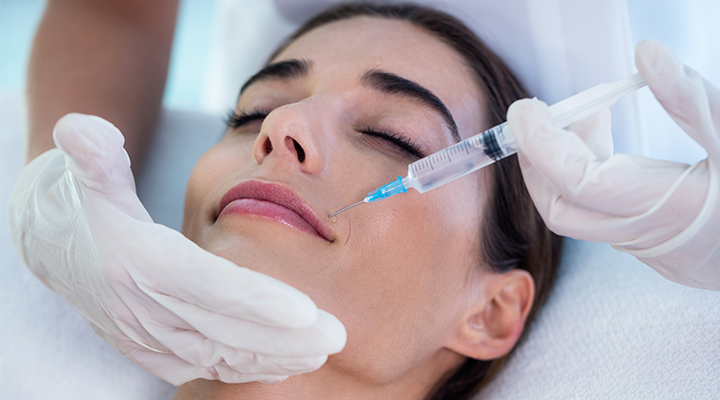
How Long Do Dermal Fillers Last?
People naturally lose facial fullness and plumpness as part of the aging process. The loss of subcutaneous fat leads to wrinkles, frown lines, crow’s feet, and a hollowed, sunken appearance the older a person gets. That is because the muscles of the face are closer to the surface of the skin, causing wrinkles and other typical signs of aging. Excessive sun exposure, lifestyle habits, and hereditary factors can also lead to premature skin aging. Many people choose to correct this problem by getting dermal fillers from a plastic surgeon.
Dermal fillers are injections made into the skin that contain four types of dissolvable materials. These include collagen, hyaluronic acid, calcium hydroxyapatite, and poly-L-Lactic acid. They also contain one type of permanent material, which is polymethylmethacrylate beads. The Food and Drug Administration has approved several different types of dermal fillers for the treatment of moderate to severe skin folds and facial wrinkles. Depending on the specific type and amount injected, dermal fillers can resolve the following:
- Lines running from the nose to the mouth, called the nasolabial fold
- Lines running from the mouth to the chin, called the melomental fold
- Frown lines and crow’s feet
- Lines appearing above the upper lip
- Adding volume and definition to the lips
- Making the veins on the back of the hands appear less prominent
- Restoring lost volume in the cheeks and cheekbones
Types of Dermal Fillers and How Long They Last
Restylane and Juvederm are the best-known dermal fillers currently on the market. According to the American Dermatology Association, each of these products offers consistent anti-aging results for a period of four to six months. These dermal fillers are sterile gels that are made in a laboratory. Their primary ingredient is cross-lined and non-animal hyaluronic acids. Restylane and Juvederm also contain no traces of human DNA.
Perlane and Juvederm Ultra Plus also come from cross-linked hyaluronic acid, but they have a higher molecular weight and are also thicker. The same company makes both Perlane and Restylane. Perlane and Juvederm Ultra Plus are an excellent option for adding volume in the cheeks or other areas that require a denser dermal filler. Because these products are thicker than their counterparts, they last six to nine months on average.
The dermal fillers listed below are not as well-known and do not have the same safety and consistency ratings as Restylane, Perlane, Juvederm, and Juvederm Ultra Plus. However, they may still be the right choice for some patients. These include:
- Radiesse, made from calcium hydroxyapatite. This dermal filler contains bone and cartilage by-products converted to a creamy form. The effects of a single injection can last up to 12 months. The FDA reports that Radiesse does have a higher instance of causing long-lasting bumps on the patient’s skin.
- Sculptra, made from poly-L-Lactic acid, can last up to two years, although the FDA states one year is closer to average.
Resources to Aid in Selecting the Right Dermal Filler
The best place to get a recommendation for a specific brand of dermal filler is with a certified plastic surgeon. Doctors in this specialty keep before and after pictures of previous patients who have undergone treatment with several different types of dermal fillers. Patients should also check information available from the website of the Food and Drug Administration. This lists approval date, other names of the filler, uses, and common side effects.
Please note, the information provided throughout this site is not intended or implied to be a substitute for professional medical advice, diagnosis or treatment. All content, including text, graphics, images, and video, on or available through this website is for general information purposes only. If you are experiencing relating symptoms, please visit your doctor or call 9-1-1 in an emergency.
